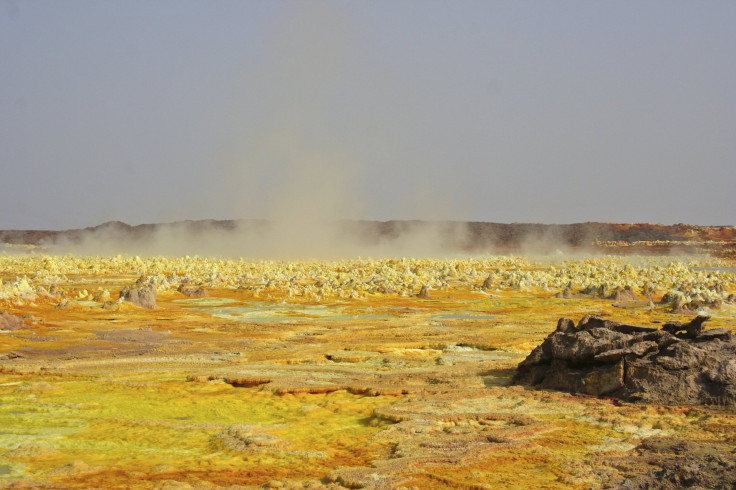Ethiopia Gears Up For A New Power Trip: Geothermal Energy

Tectonic fault lines are coming in handy for the East African country of Ethiopia. A new project is in the works to generate geothermal energy in the country, where only about 20 percent of the population has access to electricity.
Geothermal technology could generate thousands of megawatts of energy capacity for Ethiopia if all goes according to plan, which could go a long way toward helping the government bring power to the millions of homes -- mostly in rural areas -- that are currently off the grid.
It’s not that Ethiopia is particularly low on energy -- in fact, the country is an energy exporter thanks to its smart investments in hydroelectric power over the past several years. The real challenge involves expanding infrastructure so that the spoils of Ethiopia’s rapidly growing economy can reach the far-flung regions that were left behind while urban areas -- especially the capital, Addis Ababa -- have thrived.
Geothermal energy projects essentially convert heat -- originating form radioactive decay in the Earth’s core -- into energy. It is a clean and cost-effective way to generate electricity, though it is generally limited to areas where two or more tectonic plates meet.
Ethiopia is situated along the East African Rift, a zone of high tectonic activity where the African Plate is in the slow process of splitting into two. The long East African Rift Valley, which runs from Jordan down to Mozambique, is visible evidence of this split. So are the numerous volcanoes in the region, including the famous Mount Kilimanjaro -- technically a dormant volcano -- in northern Tanzania.
The region is a prime location for massive geothermal energy -- and Ethiopia has a precedent right next door. Kenya has found great success with its own geothermal projects -- it is the biggest geothermal producer on the continent with an installed capacity of more than 212 megawatts, according to Bloomberg.
Ethiopia will follow suit with help from the World Bank and the African Development Bank, which are working together to boost geothermal research and production all across the East African Rift Valley.
The World Bank has already granted US$40 million to Ethiopia in order to spur renewable energy projects, according to The Guardian. For geothermal projects now under way, that money is being used mainly for exploration -- if it shows promise, private investors will be invited to develop geothermal facilities. Success could lead to more grants from the World Bank.
This is just one more sign of Ethiopia’s great potential, which has become increasingly evident over the past several years. Economic growth and political stability make the nation an encouraging role model to its neighbors in the volatile Horn of Africa. Addis Ababa is home to the headquarters of the African Union, making it a popular meeting spot for dignitaries from the whole continent. Ethiopian exports are growing by about 50 percent each year, helped by a devaluation of the national currency. Foreign loans for agricultural and infrastructural improvements are on the upswing. The poverty rate has fallen consistently over the past several years, though it still presents a serious problem at about 29 percent.
Renewable energy in particular is an arena where sub-Saharan African countries have a chance to shine. Widespread underdevelopment gives the region a paradoxical advantage, since alternative energy initiatives can start from scratch in many cases, skipping the retrofitting that industrialized states will have to undergo in order to modernize.
Africa is already starting to see the ill effects of global climate change, so it has great incentive to get serious about alternative energy resources. And now that Ethiopia is joining other clean energy pioneers like Kenya and Ghana, it could yield long-term benefits for the entire continent.
© Copyright IBTimes 2024. All rights reserved.












